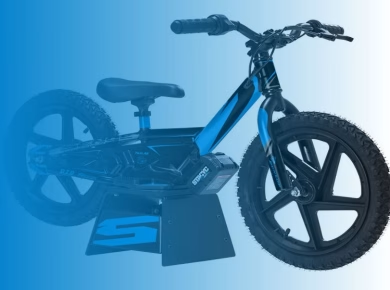The excitement surrounding Apple’s innovations is palpable, and with whispers of a folding iPhone circulating through the tech community, many are left wondering: is this the next big leap for the iconic smartphone brand? The concept of a foldable device is not new, yet Apple’s approach could redefine user experience in ways we haven’t yet imagined. In this article, we’ll explore what the folding iPhone might entail, the implications of such a design, and whether it’s worth the anticipation.
The Evolution of the iPhone
Since its inception in 2007, the iPhone has undergone a variety of transformations. Each iteration has introduced features that have not only improved functionality but also enhanced user experience. From the initial touch screen to the introduction of Face ID, Apple has consistently pushed boundaries. As technology evolves, so too do consumer expectations. Foldable devices, once seen as a novelty, have begun to gain traction in the market. Samsung and other brands have already attempted to capture this niche, but Apple’s entry could significantly shift the landscape.
What We Know About the Folding iPhone
While Apple has not officially confirmed a folding iPhone, the rumors and patents suggest a serious interest in this innovative technology. The idea is to create a device that combines the best of both worlds: a compact phone that unfolds into a larger screen for enhanced functionality. Imagine the benefits of a tablet-sized display that fits snugly in your pocket. This concept could open up a range of possibilities for multitasking, gaming, and media consumption.
Design and Technology Considerations
The design of a folding iPhone would need to address several technical challenges. Durability is a primary concern; a device that folds repeatedly must withstand the rigors of daily use. Apple’s emphasis on quality means that extensive testing and innovation will be essential. The hinge mechanism, screen material, and overall structural integrity will be critical components of the design process.
Additionally, Apple’s renowned attention to detail in user interface design would be crucial. A folding screen introduces complexities in how apps and features adapt to different orientations and screen sizes. A seamless transition between folded and unfolded states will be key to ensuring a smooth user experience.
User Experience: A New Era of Interaction
If Apple successfully launches a folding iPhone, it could revolutionize how users interact with their devices. The potential for enhanced multitasking is one of the most exciting aspects. Picture this: you could have a video call on one half of the screen while jotting down notes on the other. This kind of functionality could appeal especially to professionals and students who rely on their devices for productivity.
Moreover, the immersive experience of gaming and video streaming on a larger screen could attract a broader audience. As consumers increasingly seek devices that cater to their diverse needs, a folding iPhone could emerge as the ultimate multitool.
Potential Drawbacks and Considerations
However, it’s not all smooth sailing. The folding mechanism could introduce vulnerabilities; users might be concerned about the longevity of the hinge and screen. Additionally, the price point is something to consider. Apple’s products are often premium priced, and a folding iPhone could potentially reach even higher price brackets, making it less accessible to a broader audience.
There’s also the question of practicality. While a foldable phone sounds appealing, will it fit seamlessly into everyday life? Some users may prefer the simplicity and durability of traditional smartphones. It’s essential to consider whether the benefits of a folding design outweigh the potential inconvenience.
Market Reception and Competition
Should Apple decide to release a folding iPhone, the market reception will be closely scrutinized. Given the brand’s loyal customer base, there’s a strong chance of initial enthusiasm. However, it will be crucial for Apple to differentiate its offering from competitors like Samsung. Innovations in software, exclusive features, and superior build quality will be necessary to capture consumer interest.
Apple’s ecosystem also plays a significant role. The integration of a folding iPhone within the broader Apple product lineup—such as iPads, Macs, and Apple Watches—could enhance its appeal. For instance, a seamless transition between devices could make multitasking even more efficient, thereby providing a cohesive user experience that competitors may struggle to match.
Looking Ahead: Innovation or Gimmick?
As we contemplate the future of the folding iPhone, the question arises: will it be a groundbreaking innovation or merely a gimmick? Apple has a history of turning potential gimmicks into essential features. Think about the introduction of the App Store or the Face ID technology—both were initially met with skepticism but have since become integral to the user experience.
The success of the folding iPhone will hinge on how well Apple can address the concerns surrounding durability, usability, and price. If they can deliver a device that not only meets but exceeds expectations, the folding iPhone could indeed be worth the wait.
Consumer Expectations
As consumers, we have become accustomed to rapid advancements in technology. We expect our devices to be not only functional but also innovative and intuitive. For Apple to succeed with a folding iPhone, they must align with these expectations while also surprising us with something truly unique.
The anticipation for a folding iPhone is palpable, and it’s clear that many are eager to see what Apple has in store. The prospect of a device that adapts to our needs and enhances our daily activities is undoubtedly appealing. However, the wait may be longer than we hope; Apple is known for its meticulous development process, and for good reason.
Conclusion: Is It Worth the Wait?
In conclusion, the idea of a folding iPhone presents a tantalizing glimpse into the future of mobile technology. The potential for enhanced user experience, improved multitasking, and a new way to interact with our devices could redefine what we expect from smartphones. Yet, there are valid concerns regarding durability, practicality, and cost that cannot be overlooked.
Ultimately, whether the folding iPhone is worth waiting for depends on individual preferences and expectations. Apple’s ability to innovate while maintaining quality will be the deciding factor in its success. As we look forward to the possibilities that lie ahead, one thing is clear: the conversation surrounding the folding iPhone is just beginning, and it’s a discussion worth having.
With each passing day, as we inch closer to a potential announcement from Apple, the excitement builds. Will this be the innovation we’ve been waiting for? Only time will tell, but for now, the anticipation itself is part of the thrill.





